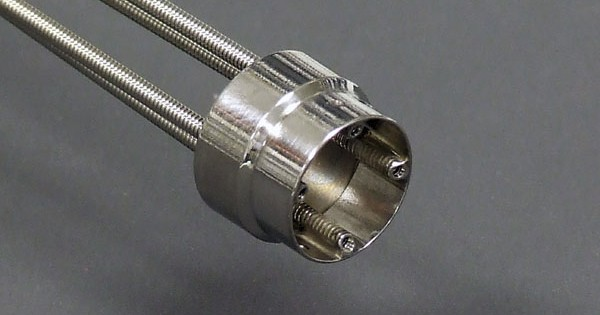A Closer Look at Modern Medical Innovations!

Over the past few decades, contemporary medical technologies changed the landscape of diagnosing, treating, and monitoring diseases in healthcare professionals. Whether it is robotic surgery or wireless diagnostics, the discipline has changed at an astounding rate. Among the most revolutionary of advances are the instruments that allow minimally invasive operations, particularly in the area of endoscopy. These tools provide better visualization and diagnostic accuracy besides reducing recovery time.
Understanding how modern medical equipment functions and evolves is essential for grasping the scope of today’s medical capabilities. Patients tend to care about the results of treatment, but not many of them appreciate the engineering wonders that facilitate such progress. Each scan, procedure, or test is preceded by an intricate network of well-developed details that were created with one purpose in mind to save a life and improve patient safety.
This article takes a closer look at the structural and functional innovations embedded in modern medical equipment, with a focus on the endoscope coil pipe assembly—a critical component in endoscopic technology that is helping reshape surgical and diagnostic practices globally.
Understanding Medical Equipment: Beyond the Basics
Medical equipment refers to the various tools, machines, and devices used by healthcare professionals to diagnose, monitor, and treat patients. This term is very broad- it includes very basic tools such as thermometers, or it can include complex imagery equipment such as MRIs and CT scanners. This equipment is becoming more and more complex and specialized as the healthcare needs increase.
The design of modern medical equipment now focuses on three main aspects namely accuracy, safety, and efficiency. These innovations no longer need to be limited to hospital rooms only; a lot of them became small, portable, and even wearable. The connected devices are getting smarter with embedded sensors, artificial intelligence-based diagnostics, and remote connectivity to enable telemedicine.
But it is worth mentioning that the functionality of such an advanced tech is not based merely on the software or ultra-expensive screens but the precision of mechanics on a microscopic scale. Internal parts, including coils, lenses, and flexible pipe assemblies, have to work perfectly under harsh clinical conditions. Any minor failure would result in false results or complications in the patient.
The endoscope coil pipe assembly is a perfect example of this intricate internal engineering. This component is crucial in processes where everything is about accuracy, although most people do not pay much attention to it. Knowing it gives one a good perspective on the extent to which engineering has been integrated with healthcare.
The Role of Endoscopy in Modern Medicine:
Endoscopy has turned out to be one of the most important diagnostic and therapeutic instruments in current medicine. Endoscopy greatly eliminates the risks of the traditional exploratory surgery by enabling doctors to see the internal organs of the body in real-time without having to perform a major surgery. Endoscopy, be it in the examination of the gastrointestinal system, bronchoscopies, or urological tests, has become one of the gold standards of minimally invasive medicine.
An endoscope usually is a long thin flexible tube with a camera and a light. The tube should be strong and flexible- it should be able to maneuver through intricate anatomical routes without damaging or irritating them. The success of these devices depends heavily on the precision of each internal component, especially the endoscope coil pipe assembly, which enables smooth articulation and cable protection within the device.
Endoscopy is nowadays not only a visualization tool, but also used to perform biopsies, to remove polyps and even to perform local drug delivery. This has resulted in fewer stays in hospitals, faster recovery and lower health care expenses. The development of the instrument has followed the general trends in technology, adopting the advances in optics, mechanics, and materials science.
With the further development of endoscopy, the requirements to the highly specialized and robust components can only increase. Recognizing the complexity behind these systems is essential to appreciating how far modern medical equipment has come—and how much further it can go.
What is an Endoscope Coil Pipe Assembly?
At the heart of an endoscope’s mechanical structure is the endoscope coil pipe assembly—a finely engineered component that ensures both flexibility and stability during procedures. The camera on the endoscope is a popular feature but it is the coil pipe assembly that quietly takes care of the movement, protection, and cable and fiber routing of internal cables and fibers.
An endoscope coil pipe assembly typically consists of tightly wound metallic or polymer coils encased in a flexible sheath. This design enables the scope to be bent, twisted and also rotated without affecting its internal structure. The coils allow safe transmission of wiring and fiber optics, protecting them against stress or kinking as the scope makes its way through the body.
Accuracy on the production of such assemblies is not an option. Every coil has to be manufactured to precise requirements usually with tolerances in microns. Such precision makes sure that the endoscope is high-definition and performs well even when the pathway is narrow and twisted. In addition, they should be made of biocompatible materials that are corrosion resistant and can resist sterilization procedures.
Other contemporary inventions have also brought the multilayered designs, which are not only strong mechanically but also lighter and thinner. Such additions are not only making the patient more comfortable but also increase the life of the device.
Conclusion:
The combination of science, engineering and clinical care has come together in a special relationship to create modern medical technology. All the diagnostic tools, surgical instruments or imaging devices that prove to be successful are designed on a pedestal of high design standards and extensive testing. Among these, the endoscope coil pipe assembly serves as a remarkable example of how even the smallest components can have a profound impact on patient care.
As we continue to innovate and refine medical equipment, understanding the intricacies behind these devices becomes all the more important. They are not merely tools but the facilitators of the modern healthcare environment, enhancing its outcomes and changing the face of medicine as we know it.




